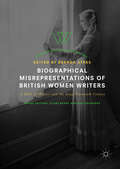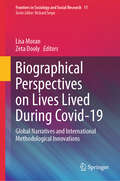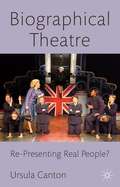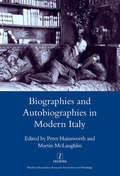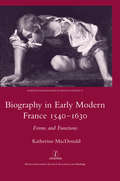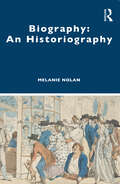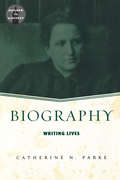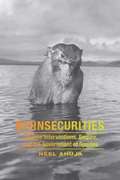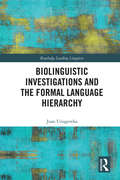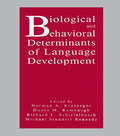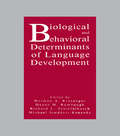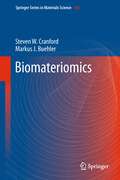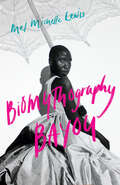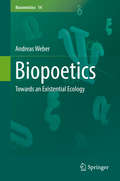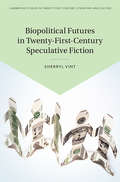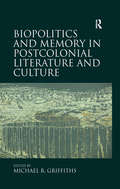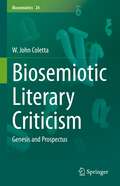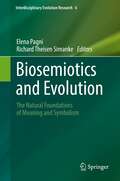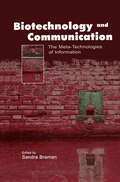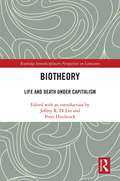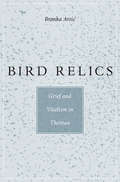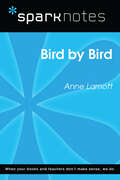- Table View
- List View
Biographical Misrepresentations of British Women Writers: A Hall of Mirrors and the Long Nineteenth Century (Palgrave Studies in Life Writing)
by Brenda AyresThis book is an investigation of the biases, contradictions, errors, ambiguities, gaps, and historical contexts in biographies of controversial British women who published during the long nineteenth century, many of them left unchecked and perpetuated from publication to publication. Fourteen scholars analyze the agenda, problems, and strengths of biographical material, highlighting the flaws, deficiencies, and influences that have distorted the portraits of women such as Lady Mary Wortley Montagu, Mary Wollstonecraft, Mary Hays, Sydney Owenson, Letitia Elizabeth Landon, Felicia Hemans, Elizabeth Barrett Browning, Caroline Norton, Elizabeth Gaskell, Charlotte Bront#65533;, Lady Florence Dixie, George Eliot, and Edith Simcox. Through exposing distortions, this fascinating study demonstrates that biographies are often more about the biographer than they are about the biographee and that they are products of the time in which they are written.
Biographical Perspectives on Lives Lived During Covid-19: Global Narratives and International Methodological Innovations (Frontiers in Sociology and Social Research #11)
by Lisa Moran Zeta DoolyThis volume elucidates international biographical and narrative perspectives on how COVID-19 influenced people’s daily lives across different countries and contexts. It draws together global interdisciplinary scholarly contributions and conceptualizes the lived life as a complex, multilayered and multidimensional phenomenon that is constantly unfolding both in and across time. Significantly, this volume focuses on seldom-heard groups including persons diagnosed with HIV, COVID-19 dissenters, prisoners, essential workers, waste pickers, refugees and migrants. The chapters focus on the pandemic's multifarious impacts on people’s lived realities in personal and professional domains, exploring the complexity of people’s relationships with family, friends, interactions with colleagues and students and the centrality of emotions, to everyday human experiences, including grief, loss and loneliness as well as moments of joy and processes of personal renewal. This volume explores innovative questions, issues and challenges on the development and utilization of rich, biographical narrative methodologies during COVID-19, addressing important issues like power and voice, and pragmatic questions of how to do biographic research whilst socially distant. Contributions to this work illuminate the multidimensionality of human experiences, adaptability to adverse circumstances and the complexity of working through unanticipated global events whilst reimagining novel social futures.
Biographical Theatre
by Ursula CantonMarilyn Monroe, Vincent van Gogh or the victims of rendition flights - the number and variety of historical and contemporary figures represented on British stages is amazing. This book develops a new theoretical framework for the representation of real life figures on stage and examines different ways in which they can be included in performances.
Biographies and Autobiographies in Modern Italy: a Festschrift for John Woodhouse
by Martin McLaughlin"Critical interest in biography and autobiography has never been higher. However, while life-writing flourishes in the UK, in Italy it is a less prominent genre. The twelve essays collected here are written against this backdrop, and address issues in biographical and autobiographical writing in Italy from the later nineteenth century to the present, with a particular emphasis on the interplay between individual lives and life-writing and the wider social and political history of Italy. The majority of essays focus on well-known writers (D'Annunzio, Svevo, Bontempelli, Montale, Levi, Calvino, Eco and Fallaci), and their varying anxieties about autobiographical writing in their work. This picture is rounded out by a series of studies of similar themes in lesser known figures: the critic Enrico Nencioni, the Welsh-Italian painter Llewellyn Lloyd and Italian writers and journalists covering the Spanish Civil War. The contributors, all specialists in their fields, are Antonella Braida, Charles Burdett, Jane Everson, John Gatt Rutter, Robert Gordon, Gwyn Griffith, Peter Hainsworth, Martin McLaughlin, Gianni Oliva, Giuliana Pieri, and Jon Usher. The volume is dedicated to John Woodhouse, on his seventieth birthday, and concludes with a bibliography of his writings."
Biography (The Critical Idiom Reissued #32)
by Alan ShelstonFirst published in 1977, this book explores biography in the post-Renaissance period and investigates some of the problems implicit in this literary form. The introduction considers various aspects of biographical theory as expressed by practitioners and critics. The rest of the book is a detailed examination of specific works placed in chronological context — reflecting the author’s assertion that a work of biography is inseparable from the intellectual and cultural precepts of its age. Amongst the works examined are: Plutarch’s Lives, Aubrey’s Brief Lives, Boswell’s Life of Johnson, and Johnson’s Life of Savage. This book will be of interest to students of literature and cultural history.
Biography in Early Modern France, 1540-1630: Forms and Functions
by Katherine MacDonald"When the famous Royal Professor of Philosophy and Eloquence Petrus Ramus (1515-1572) gave a lecture, one of his most promising pupils stood by, ready to tug on his coat if he made a mistake. That pupil was Ramus's future biographer, the much less famous Nicolas de Nancel (1539-1610), who recounted this anecdote in hisVita Rami (1599). Nancel's insertion of himself into his life of Ramus is typical of early modern biographies of men of letters. As biographer, the humanist man of letters situated himself within the same cultural field as his subject, thereby accrediting himself as a fellow man of letters by his display of humanistic competence. The first study of monograph lives of men of letters in sixteenth-century France, this ground-breaking book offers valuable insights into biography's role as a form of social and cultural negotiation geared to advance the biographer's career."
Biography: An Historiography
by Melanie NolanBiography: An Historiography examines how Western historians have used biography from the nineteenth century to the present – considering the problems and challenges that historians have faced in their biographical practice systematically. This volume analyses the strategies and methods that historians have used in response to seven major issues identified over time to do with evidence, including but not limited to the problem of causation, the problem of fact and fiction, the problem of other minds, the problem of significance or representativeness, the problems of perspective, both macro and micro, and the problem of subjectivity and relative truth. This volume will be essential for both postgraduates and historians studying biography.
Biography: Writing Lives (Genres In Context Ser.)
by Catherine N. ParkeCatherine Parke explores biography through detailed examinations of Samuel Johnson, Virginia Woolf, Langston Hughes, Gertrude Stein and other masters of the genre.
Bioinsecurities: Disease Interventions, Empire, and the Government of Species
by Neel AhujaIn Bioinsecurities Neel Ahuja argues that U.S. imperial expansion has been shaped by the attempts of health and military officials to control the interactions of humans, animals, viruses, and bacteria at the borders of U.S. influence, a phenomenon called the government of species. The book explores efforts to control the spread of Hansen's disease, venereal disease, polio, smallpox, and HIV through interventions linking the continental United States to Hawai'i, Panamá, Puerto Rico, Cuba, Congo, Iraq, and India in the twentieth and twenty-first centuries. Ahuja argues that racial fears of contagion helped to produce public optimism concerning state uses of pharmaceuticals, medical experimentation, military intervention, and incarceration to regulate the immune capacities of the body. In the process, the security state made the biological structures of human and animal populations into sites of struggle in the politics of empire, unleashing new patient activisms and forms of resistance to medical and military authority across the increasingly global sphere of U.S. influence.
Biolinguistic Investigations and the Formal Language Hierarchy (Routledge Leading Linguists)
by Juan UriagerekaThis volume collects some of Juan Uriagereka’s previously published pieces and presentations on biolinguistics in recent years in one comprehensive volume. The book’s introduction lays the foundation for the field of biolinguistics, which looks to integrate concepts from the natural sciences in the analysis of natural language, situating the discussion within the minimalist framework. The volume then highlights eight of the author’s key papers from the literature, some co-authored, representative of both the architectural and evolutionary considerations to be taken into account within biolinguistic research. The book culminates in a final chapter showcasing the body of work being done on biolinguistics within the research program at the University of Maryland and their implications for interdisciplinary research and future directions for the field. This volume is essential reading for students and scholars interested in the interface between language and the natural sciences, including linguistics, syntax, biology, archaeology, and anthropology.
Biological and Behavioral Determinants of Language Development
by Duane M. Rumbaugh Norman A. Krasnegor Richard L. Schiefelbusch Michael Studdert-KennedyThis book presents a current, interdisciplinary perspective on language requisites from both a biological/comparative perspective and from a developmental/learning perspective. Perspectives regarding language and language acquisition are advanced by scientists of various backgrounds -- speech, hearing, developmental psychology, comparative psychology, and language intervention. This unique volume searches for a rational interface between findings and perspectives generated by language studies with humans and with chimpanzees. Intended to render a reconsideration as to the essence of language and the requisites to its acquisition, it also provides readers with perspectives defined by various revisionists who hold that language might be other than the consequence of a mutation unique to humans and might, fundamentally, not be limited to speech.
Biological and Behavioral Determinants of Language Development
by Duane M. Rumbaugh Norman A. Krasnegor Richard L. Schiefelbusch Michael Studdert-KennedyThis book presents a current, interdisciplinary perspective on language requisites from both a biological/comparative perspective and from a developmental/learning perspective. Perspectives regarding language and language acquisition are advanced by scientists of various backgrounds -- speech, hearing, developmental psychology, comparative psychology, and language intervention. This unique volume searches for a rational interface between findings and perspectives generated by language studies with humans and with chimpanzees. Intended to render a reconsideration as to the essence of language and the requisites to its acquisition, it also provides readers with perspectives defined by various revisionists who hold that language might be other than the consequence of a mutation unique to humans and might, fundamentally, not be limited to speech.
Biomateriomics (Springer Series in Materials Science #165)
by Markus J. Buehler Steven W. CranfordBiomateriomics is the holistic study of biological material systems. While such systems are undoubtedly complex, we frequently encounter similar components -- universal building blocks and hierarchical structure motifs -- which result in a diverse set of functionalities. Similar to the way music or language arises from a limited set of music notes and words, we exploit the relationships between form and function in a meaningful way by recognizing the similarities between Beethoven and bone, or Shakespeare and silk. Through the investigation of material properties, examining fundamental links between processes, structures, and properties at multiple scales and their interactions, materiomics explains system functionality from the level of building blocks. Biomateriomics specifically focuses the analysis of the role of materials in the context of biological processes, the transfer of biological material principles towards biomimetic and bioinspired applications, and the study of interfaces between living and non-living systems. The challenges of biological materials are vast, but the convergence of biology, mathematics and engineering as well as computational and experimental techniques have resulted in the toolset necessary to describe complex material systems, from nano to macro. Applying biomateriomics can unlock Nature's secret to high performance materials such as spider silk, bone, and nacre, and elucidate the progression and diagnosis or the treatment of diseases. Similarly, it contributes to develop a de novo understanding of biological material processes and to the potential of exploiting novel concepts in innovation, material synthesis and design.
Biomythography Bayou (The Griot Project Book Series)
by Mel Michelle LewisWhen your stories flow from the brackish waters of the Gulf South, where the land and water merge, your narratives cannot be contained or constrained by the Eurocentric conventions of autobiography. When your story is rooted in the histories of your West African, Creek, and Creole ancestors, as well as your Black, feminist, and queer communities, you must create a biomythography that transcends linear time and extends beyond the pages of a book. Biomythography Bayou is more than just a book of memoir; it is a ritual for conjuring queer embodied knowledges and decolonial perspectives. Blending a rich gumbo of genres—from ingredients such as praise songs, folk tales, recipes, incantations, and invocations—it also includes a multimedia component, with “bayou tableau” images and audio recording links. Inspired by such writers as Audre Lorde, Zora Neale Hurston, and Octavia Butler, Mel Michelle Lewis draws from the well of her ancestors in order to chart a course toward healing Afrofutures. Showcasing the nature, folklore, dialect, foodways, music, and art of the Gulf’s coastal communities, Lewis finds poetic ways to celebrate their power and wisdom.
Biopoetics: Towards an Existential Ecology (Biosemiotics #14)
by Andreas WeberMeaning, feeling and expression - the experience of inwardness - matter most in human existence. The perspective of biopoetics shows that this experience is shared by all organisms. Being alive means to exist through relations that have existential concern, and to express these dimensions through the body and its gestures. All life takes place within one poetic space which is shared between all beings and which is accessible through subjective sensual experience. We take part in this through our empirical subjectivity, which arises from the experiences and needs of living beings, and which makes them open to access and sharing in a poetic objectivity. Biopoetics breaks free from the causal-mechanic paradigm which made biology unable to account for mind and meaning. Biology becomes a science of expression, connection and subjectivity which can understand all organisms including humans as feeling agents in a shared ecology of meaningful relations, embedded in a symbolical and material metabolism of the biosphere.
Biopolitical Futures in Twenty-First-Century Speculative Fiction (Cambridge Studies in Twenty-First-Century Literature and Culture)
by Sherryl VintDrawing on a rich array of twenty-first-century speculative fiction, this book demonstrates how the commodification of life through biotechnology has far-reaching implications for how we think of personhood, agency, and value. Sherryl Vint argues that neoliberalism is reinventing life under biocapital. She offers new biopolitical figurations that can help theoretically grasp and politically respond to a distinctive twenty-first-century biopolitics. This book theorizes how biotechnology intervenes in the very processes of biological function, reshaping life itself to serve economic ends. Linking fictional texts with material examples, Biopolitical Futures in Twenty-First-Century Speculative Fiction shows how these practices are linked to new modes of exploitative economic relations that cannot be redressed by human rights. It concludes with a posthumanist reframing of the value of life that grounds itself elsewhere than in capitalist logics, a vision that, in a Covid age, might become fundamental to a new politics of ecological relations.
Biopolitics and Memory in Postcolonial Literature and Culture
by Michael R. GriffithsFrom the Truth and Reconciliation Commission in South Africa to the United Nations Permanent Memorial to the Victims of Slavery and the Transatlantic Slave Trade, many worthwhile processes of public memory have been enacted on the national and international levels. But how do these extant practices of memory function to precipitate justice and recompense? Are there moments when such techniques, performances, and displays of memory serve to obscure and elide aspects of the history of colonial governmentality? This collection addresses these and other questions in essays that take up the varied legacies, continuities, modes of memorialization, and poetics of remaking that attend colonial governmentality in spaces as varied as the Maghreb and the Solomon Islands. Highlighting the continued injustices arising from a process whose aftermath is far from settled, the contributors examine works by twentieth-century authors representing Asia, Africa, North America, Latin America, Australia, and Europe. Imperial practices throughout the world have fomented a veritable culture of memory. The essays in this volume show how the legacy of colonialism’s attempt to transform the mode of life of colonized peoples has been central to the largely unequal phenomenon of globalization.
Biosemiotic Literary Criticism: Genesis and Prospectus (Biosemiotics #24)
by W. John ColettaThis volume is based to a large extent on the understanding of biosemiotic literary criticism as a semiotic-model-making enterprise. For Jurij Lotman and Thomas A. Sebeok, “nature writing is essentially a model of the relationship between humans and nature” (Timo Maran); biosemiotic literary criticism, itself a form of nature writing and thus itself an ecological-niche-making enterprise, will be considered to be a model of modeling, a model of nature naturing. Modes and models of analysis drawn from Thomas A. Sebeok and Marcel Danesi’s Forms of Meaning: Modeling Systems Theory and Semiotic Analysis as well as from Timo Maran’s work on “modeling the environment in literature,” Edwina Taborsky’s writing on Peircean semiosis, and, of course, Jesper Hoffmeyer’s formative work in biosemiotics are among the most important organizing elements for this volume.
Biosemiotics and Evolution: The Natural Foundations of Meaning and Symbolism (Interdisciplinary Evolution Research #6)
by Elena Pagni Richard Theisen SimankeThis book reviews the evolution of Biosemiotics and gives an outlook on the future of this interdisciplinary new discipline. In this volume, the foundations of symbolism are transformed into a phenomenological, technological, philosophical and psychological discussion enriching the readers’ knowledge of these foundations. It offers the opportunity to rethink the impact that evolution theory and the confirmations about evolution as a historical and natural fact, has had and continues to have today. The book is divided into three parts:Part I Life, Meaning, and InformationPart II Semiosis and EvolutionPart III Physics, medicine, and bioenergetics It starts by laying out a general historical, philosophical, and scientific framework for the collection of studies that will follow. In the following some of the main reference models of evolutionary theories are revisited: Extended Synthesis, Formal Darwinism and Biosemiotics. The authors shed new light on how to rethink the processes underlying the origins and evolution of knowledge, the boundary between teleonomic and teleological paradigms of evolution and their possible integration, the relationship between linguistics and biological sciences, especially with reference to the concept of causality, biological information and the mechanisms of its transmission, the difference between physical and biosemiotic intentionality, as well as an examination of the results offered or deriving from the application in the economics and the engineering of design, of biosemiotic models for the transmission of culture, digitalization and proto-design. This volume is of fundamental scientific and philosophical interest, and seen as a possibility for a dialogue based on theoretical and methodological pluralism. The international nature of the publication, with contributions from all over the world, will allow a further development of academic relations, at the service of the international scientific and humanistic heritage.
Biotechnology and Communication: The Meta-Technologies of Information (Routledge Communication Series)
by Sandra BramanThis volume examines the convergence of biotechnology and communication systems and explores how this convergence directly influences our understanding of the nature of communication. Editor Sandra Braman brings together scholars to examine this convergence in three areas: genetic information and "facticity"; social issues and implications; and the economic and legal issues raised by the production and ownership of information. The work highlights the sophisticated processes taking place as biotechnology and information technology systems continue to evolve. The chapters in this book approach the complex history of this topic and the issues it raises from a number of directions. It begins by examining the shared features and spaces of biotechnology and digital information technologies as meta-technologies--qualitatively distinct from both the tools first used in the premodern era and the industrial technologies that characterized modernity. Next, the book explores what is and is not useful in treating the types of information processed by the two meta-technologies through a shared conceptual lens and looks at issues raised by the ownership of genetic and digital information. The final chapters are concerned with relationships between information and power. Defining a future research agenda for communication scholarship, this work is beneficial to scholars and students in science communication, cultural studies, information technologies, and sociology.
Biotheory: Life and Death under Capitalism (Routledge Interdisciplinary Perspectives on Literature)
by Peter Hitchcock Jeffrey R. Di LeoForged at the intersection of intense interest in the pertinence and uses of biopolitics and biopower, this volume analyzes theoretical and practical paradigms for understanding and challenging the socioeconomic determinations of life and death in contemporary capitalism. Its contributors offer a series of trenchant interdisciplinary critiques, each one taking on both the specific dimensions of biopolitics and the deeper genealogies of cultural logic and structure that crucially inform its impress. New ways to think about biopolitics as an explanatory model are offered, and the subject of bios (life, ways of life) itself is taken into innovative theoretical possibilities. On the one hand, biopolitics is addressed in terms of its contributions to forms and divisions of knowledge; on the other, its capacity for reformulation is assessed before the most pressing concerns of contemporary living. It is a must read for anyone concerned with the study of bios in its theoretical profusions.
Bird Relics: Grief and Vitalism in Thoreau
by Branka ArsićBranka Arsic shows that Thoreau developed a theory of vitalism in response to his brother's death. Through grieving, he came to see life as a generative force into which everything dissolves and reemerges. This reinterpretation, based on sources overlooked by critics, explains many of Thoreau's more idiosyncratic habits and obsessions.
Bird Without Wings: FAEBLES
by Cally PepperScarlett is sixteen. She's glad to be finishing high school because she feels unpopular and not especially attractive. Following the mysterious disappearance of her father, and then an attempted date-rape by her best friend's older brother, Scarlett is confused, friendless and lonely. Then strange things begin to happen. Scarlett discovers a beautiful and mystical world that exists in parallel to the real world, the Fae (Fairy) World, and is happy to escape to this amazing place which is inhabited by some beautiful, friendly and sexy, winged Fae people.
Bird by Bird (SparkNotes Literature Guide Series)
by SparkNotesBird by Bird (SparkNotes Literature Guide) by Ann Lamott Making the reading experience fun! Created by Harvard students for students everywhere, SparkNotes is a new breed of study guide: smarter, better, faster.Geared to what today's students need to know, SparkNotes provides:chapter-by-chapter analysis explanations of key themes, motifs, and symbols a review quiz and essay topics Lively and accessible, these guides are perfect for late-night studying and writing papers.
